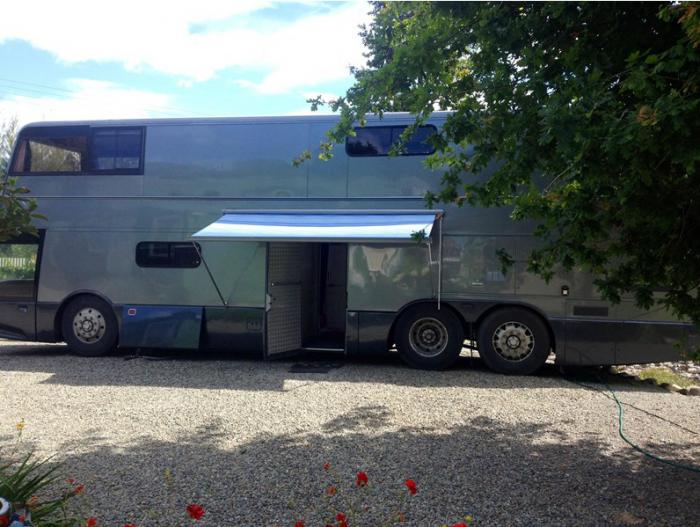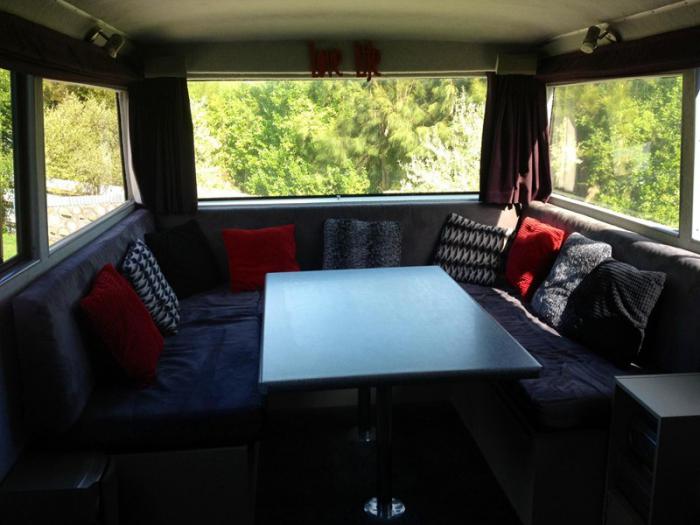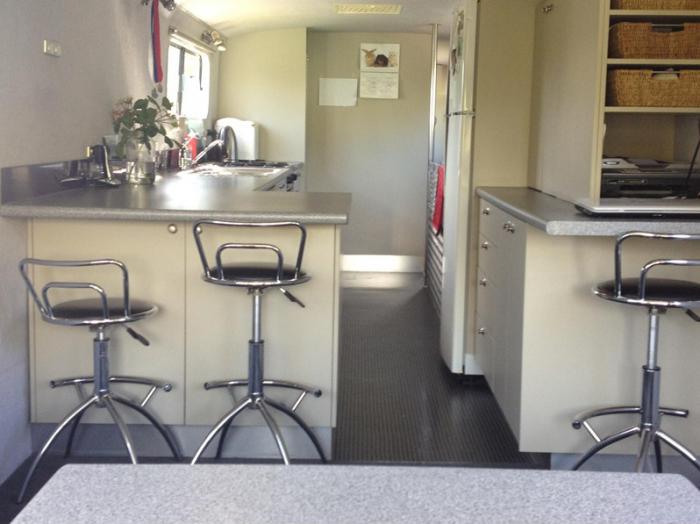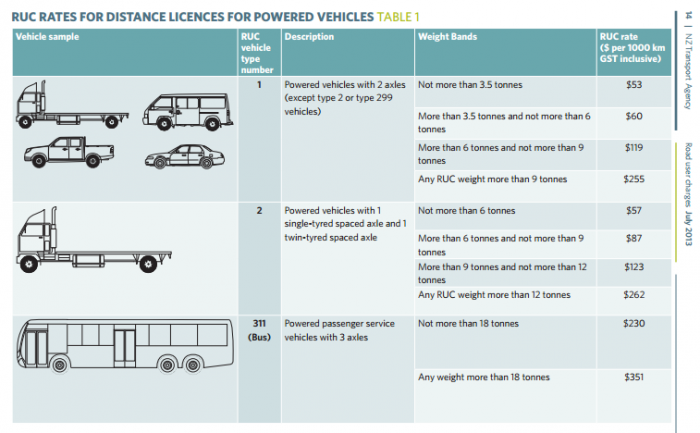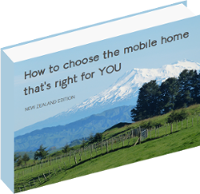One of the other ideas that has percolated since the Motorhome & Caravan Supershow is getting a caravan with slide-outs that has been gutted and re-furbishing it.
Apparently a few Rockwoods are brought into the country purely so that their internal fittings can be used in the manufacture of other vehicles, which may mean their shells are sitting around looking for a second life.
The interiors of the Rockwood caravans we saw were ghastly, unless you like living in an amalgam of colonial and 70's eras; so starting with a clean slate would be an advantage.
The down-side would be that this would take time and money. It isn't an instant solution.
The other consideration is that these caravans can NOT be used without the slide-outs fully extended. One of the two models imported into New Zealand had a slide-out either side of the front section and one at the side of the master bedroom area at the rear, doubling the initial width of 2.46m; others only had one. You would need to know that wherever you stopped you had the space to settle in for the night. The importer said he hadn't heard of any prejudice against siting these wider vehicles in camping grounds or elsewhere, despite what I had read about other family's experiences overseas.
I dare say that the re-building timeframe would be similar to converting a bus, of 6 months! That's a long wait, but still an option we can't write off just yet.




